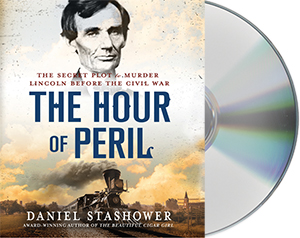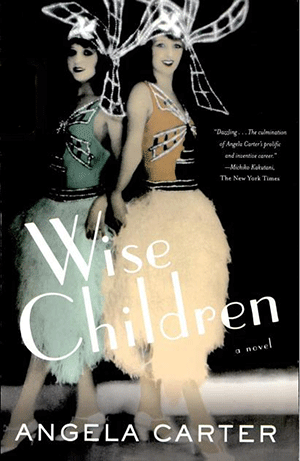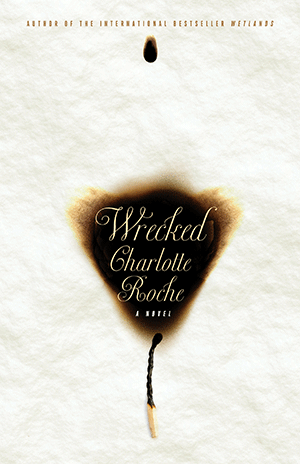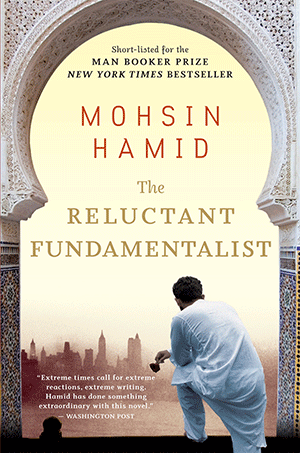This Month's Articles
REVIEWING
Till Human Voices Wake Us
By Patti Davis
Reviewed by Sally Cobau

A Place of Her Own
Sometime last year the actress Molly Ringwald published a collection of short stories called When It Happens to You. Short stories! A collection! Wasn’t Molly Ringwald supposed to be permanently stuck in a John Hughes’ movie, displaced by adolescence yet opaquely beautiful with her bee-stung lips and watery eyes? I loved Molly Ringwald and I related to her—she was the outsider, poor in Pretty in Pink and a spoiled brat in the Breakfast Club. She made a giant gaffe on David Letterman and then became obscure a few years later, but still she seemed to represent something—some indefinable ennui that adolescents seem to feel so deeply. So, this is a long way of saying I was disappointed when she broke out of her self-imposed seclusion and tried to write a collection of stories. Shouldn’t only “real writers” be allowed to pursue such a torturous quest?
It’s difficult when famous people write books of a literary sort (we expect them to write blistering memoirs and cool autobiographies, of course). When a famous sort writes a book, we crush them and make fun of them. Rarely do we say, That was great! I’m thinking of the pop singer Jewel who wrote a collection of poetry called A Night Without Armour and of an actor (one of the Phoenix brothers, I believe) who also tried his hand at the ancient form. Let’s just say, these two weren’t embraced with opened arms. So what do we do when the daughter of Ronald and Nancy Reagan writes an erotic, lively book about a lesbian couple, whose main character is suffering from the loss of a child?
It should be noted here that Patti Davis has.....Read More
REVIEWING
From the Dragon’s Mouth: Ten true stories that unveil the real China
By Ana Fuentes
Reviewed by Fred Beauford

What is Very Chinese?
My friend, Linda Jue, a Chinese-American from the Bay Area, once was describing someone she knew to me: “Well one thing about him, Fred” she finally concluded, “he is very Chinese.”
I thought I understood what she meant by very, and why she gave it such import. I gave her a small nod.
As an African American I have met more than my share of folks who were very black, and I don’t mean in skin color-- with an inner self that I could always detect; that carried over countless generations, the very soul of Africa.
And, believe it or not, I have also run into some very Americans, small as they may be.
Unlike with many of my fellow countrymen, however, what I didn’t know, listening to Linda, was what types of things made someone very Chinese.
I, like perhaps most Americans, know little about the largest population on earth. All most of us know, especially wild-eyed greedy Capitalists, is a huge, endless army of low paid worker drones; and an unbelievable gigantic market for all kinds of goods and services, that had somehow magically materialized out of nowhere.
However, in my mind, it would somehow behoove us to try and understand what my friend Linda meant by her observation, if we are going to understand who we are now locked together with economically, and who knows what else.
In the book, From the.....Read More
REVIEWING
The Hour of Peril
By Daniel Stashower
Read by: Edoardo Ballerini
Reviewed by Michael Carey

If you are like me, you either never heard of the Baltimore Plot or forgot about it, letting it slip between the lessons of your American History class years ago. But Daniel Stashower has decided to reeducate us, and lifted this controversial moment in history from the ashes of the Civil War that followed in his latest book, The Hour of Peril. He masterfully dusts off the pages and lays bare the story.
It could be said that this book is the tale of the legendary Allan Pinkerton, his life as well as his association with Abraham Lincoln and to the Baltimore Plot, a plot to kill Lincoln before his inauguration could make him the 16th President. Stashower, who has merited numerous awards and has impressive credentials as a biographer and narrative historian, brings this riveting and mysterious story to life by sifting through what I can only imagine was a mountain of research (including correspondence of some of the main characters involved in Lincoln’s safe delivery) and streamlining the story.
Taking notes from Pinkerton, both figuratively and literally, Stashower plays the good investigator and never forgets to shed light on the possibility of inaccuracies and biases that frequented accounts of this emotional charged period of American history.
It is 1861. The Northern states and the Southern states are at each other’s throats over.....Read More
ESSAY
To the Manner Born
Essay by Jan Alexander
A re-appreciation of Wise Children; by Angela Carter; first published by Chatto & Windus, Ltd. 1991.

“My name is Dora Chance. Welcome to the wrong side of the tracks.”
Who’d have imagined that London’s scrappy neighborhood of Brixton could be the setting for a kind of fairy tale? Granted, a horror story too. A pair of 75-year-old ex-showgirls—Dora and her identical twin Nora— are headed for a birthday bash where they settle old scores with their 100-year-old celebrity father who’s never acknowledged his paternity.
Wise Children was Angela Carter’s last novel, and it’s a raucous stage set of a yarn, a paean to Shakespeare and to twisted families that are nevertheless family, as well as to the legacy Carter left as spinner of fairy/horror tales as the crones of the Medieval age might have told them.
Carter died of cancer, at 51, in 1992, just a year after Wise Children was published. One can imagine this as her meditation on the sheer miracle of life. And so while she knew she was dying she spun a fantasy in which missing and-presumed-dead characters turn out to be very much alive, first wives tell off ex-husbands, and evil children who try to poison their father’s birthday cake get .....Read More
PORTFOLIO
Portfolio: A Conversation with Astrid Harrisson
by Kara Fox

International horse photographer Astrid Harrisson combines a passion for all things equine with a sensitive and perceptive approach to her photography. Following a successful career in the world of art and design – an experience in itself that has inspired Astrid to approach her subject matter in a unique and artistic manner - Astrid’s career pathway ultimately returned her focus to the horse – a life-long passion consequentially finding expression through her work; within the vast boundaries of this niche Astrid is building a solid International reputation for her talents behind the lens and for her empathy with her subjects.
Every new commission sees Astrid achieve something new, something a little different. Through both digital photography and the graphic illustration techniques employed, her resulting works are, more often than not, stylized, contemporary pieces of art. Astrid is currently represented in Dubai, the UK and USA. The powerful rhythm of Astrid’s works mimics an understanding for her equine subjects."
Why did you become such a deeply committed photographer?
I have always loved photography. My, mother used to work in a photo library. I was brought up taking photos. During college, I took courses in design, fashion and such innovations as Photoshop.
I graduated in 2002, and my interest in photography started to really.....Read More
EXCERPT
JEWS, ORGANIZED RELIGION AND ME
Excerpt from The First Decade: Essays 2000-2010
An essay by Fred Beauford
Los Angeles, 2002
“Why do some people think Jews are
obsessed with money, control and power?”
--A small ad for a lecture topic at
The Museum of Tolerance in
Los Angeles, April 10, 2002.
I have been thinking about Jews a lot lately. It could be because I am living in Los Angeles, or Culver City to be exact. Here, I live sandwiched between major film studios, and often, I watch badly, but comfortable dressed white men of all ages in shorts and t-shirts, with the lone woman, or lone Asian male, on film crews shooting in nearby parking lots, or rented storefronts.
They pay me little mind, as they go about their business of creating illusions of reality, as they are watched over closely by hatless off-duty, or retired armed motorcycle cops, along with a noticeable increase in private, unarmed security guards.
Occasionally, the younger men will venture out from their protected, fort-like studios, and I would see a small group of them walking to lunch, their identification badges, with their photos attached, swinging causally in front of them.
As I watched the large equipment and make-up trucks, and actor’s trailers everywhere, as movies, commercials, music videos, and television shows are shot all around me, I am strangely detached. I knew these white men were engaged in a world that would never include someone like me, at least not in my lifetime.
I also knew it was good for my mental health not to want their world, even though I still would like to see myself—the dashing, clever, handsome, sexual, cosmopolitan me, that resides in the deep interior of my mind—on the big screen at least once in my lifetime. But I was not a cop, or a grinning, buck-eyed comic, or a deeply ghetto challenged homeboy, or a sidekick, just a cranky old Afro-American, as the case may be.
Still, this is where my knowledge of film history, often against my will—started kicking in.
I have taught film history at UC Berkeley, SUNY Old Westbury and Cal State Northridge, and as I walked these hallow grounds of Culver City, on my way to the supermarket, or Starbucks for coffee, and watched these men work, I could almost hear the ghosts .....Read More
REVIEWING
Wrecked
By Charlotte G. Roche
Reviewed by Janet Garber

Sexual Liberation, 2013
You may want to make yourself a brown paper bag book cover - remember those? - unless you're reading Wrecked in the original German. Yes, Virginia, that is a vagina on the cover.
The first 15 pages: up close & personal! Roche has made sure you will keep on reading.
Then a major shift occurs. Elizabeth, the narrator, finally gets out of bed. You’ve had a good look at her body; now you’re introduced to her psyche. And she’s pretty much of a wreck: knocked down but not out by her free-associating angst, severe post traumatic stress, thrice-weekly Freudian therapy sessions, caring for her daughter and stepson, interspersed with visits to neighborhood brothels with her husband for a little R&R. In off hours, she and her husband have marathon sessions of watching porn, shaving their privates, and “doing it.” How surprising then when you discover that at the core of this behavior is the kind of horrific tragedy you hopefully only read about in the tabloids the day after it happens.
Elizabeth is “wrecked” but carries on with the help of a loving well-endowed husband/sex machine and mountains of highly distracting (to her) libidinous activity. Does it work for her? Uncertain, but it certainly keeps the audience tuned in.
Whether you will find this book too graphic, too clinical, too titillating, or will applaud its candor, I can’t say. For this reviewer, the crux of the story is about how one survives, puts a life back together, without losing one's mind after a family tragedy of this magnitude. If Elizabeth’s coping strategy is being the perfect wife, mother, sex partner, catering to her husband's wishes in a decidedly pre-feminist fashion, it mostly works. She gets as good as she gives in.....Read More
REVIEWING
The Athena Doctrine
By John Gerzema & Michael D’Antonio
Reviewed by Amanda Martin

“Why can’t a woman be more like a man?” famously sings Henry Higgins in MyFair Lady.
“Why can’t men be more like women?” respond John Gerzema and Michael D’Antonio in The Athena Doctrine, whose subtitle “How Women (and the Men Who Think Like Them) Will Rule the Future” pretty much sums up the thesis of their book. According to their global survey of people in thirteen nations representing 65 percent of global GDP, two-thirds of those answering agreed that “the world would be a better place if men thought more like women.”
In their 26 page introduction the authors explain how they first became interested in this theory. John Gerzema, described as “a pioneer in using data to identify social change” ( check out his website, Wikipedia entry, and watch his TED talk) and Michael D’Antonio (part of a Pulitzer Prize winning news team, prolific author, and consultant — check out his website and Huffington Post blogs) had collaborated before on another book, Spend Shift, which examined the Great Recession of 2008 and its recovery. During the book tour for Spend Shift they noticed that audiences were pointing out to them that “most of the traits exhibited by the successful entrepreneurs, leaders, organizers and creators we profiled seemed to come from aspects of human nature that are widely regarded as feminine.”
Not that it necessarily meant that women were the leaders, but that what were considered traditionally feminine values and traits were what was working, and going to continue being successful, in the 21st century. But what is “masculine” and “feminine” and who decides?
Gerzema and D’Antonio decided that.....Read More
REVIEWING
The Reluctant Fundamentalist
By Mohsin Hamid
Screenplay by Ami Boghani
Motion picture direction by Mira Nair
Reviewed by Jane M McCabe

I saw the film before I read the book. I was confused by the film’s ending as I didn’t know exactly where its fictional protagonist (nor the author for the matter) stood and what exactly had transpired; I figured my confusion would be cleared up when I read the book a few days later, but, lo and behold, I was left more confused than ever and OUTRAGED! I was outraged by what I consider its author, Mohsin Hamid’s dishonesty on some very important issues and by how both its screenplay writer, Ami Boghani, and its director, the well-respected Pakistani director Mira Nair, had so bowdlerized the script as to make parts of it unrecognizable from the novel. (She was also the director of the movie Kama Sutra: A Tale of Love, a provocative movie set in 16th century India. In 2001 she released Monsoon Wedding (2001), a film I thought wonderful about a chaotic Punjabi Indian wedding. She also directed The Namesake.)
I don’t consider The Reluctant Fundamentalist Ms. Nair’s best work. I didn’t like the novel’s conceit--the novel uses the technique of a frame story, which takes place during the course of a single evening in an outdoor Lahore cafe, where a bearded Pakistani man called Changez (the Urdu name for Genghis) tells a nervous American stranger about his love affair with an American woman, and his eventual abandonment of America. There is no dialogue between the two; the narrator does all the talking. We don’t really know who.....Read More
